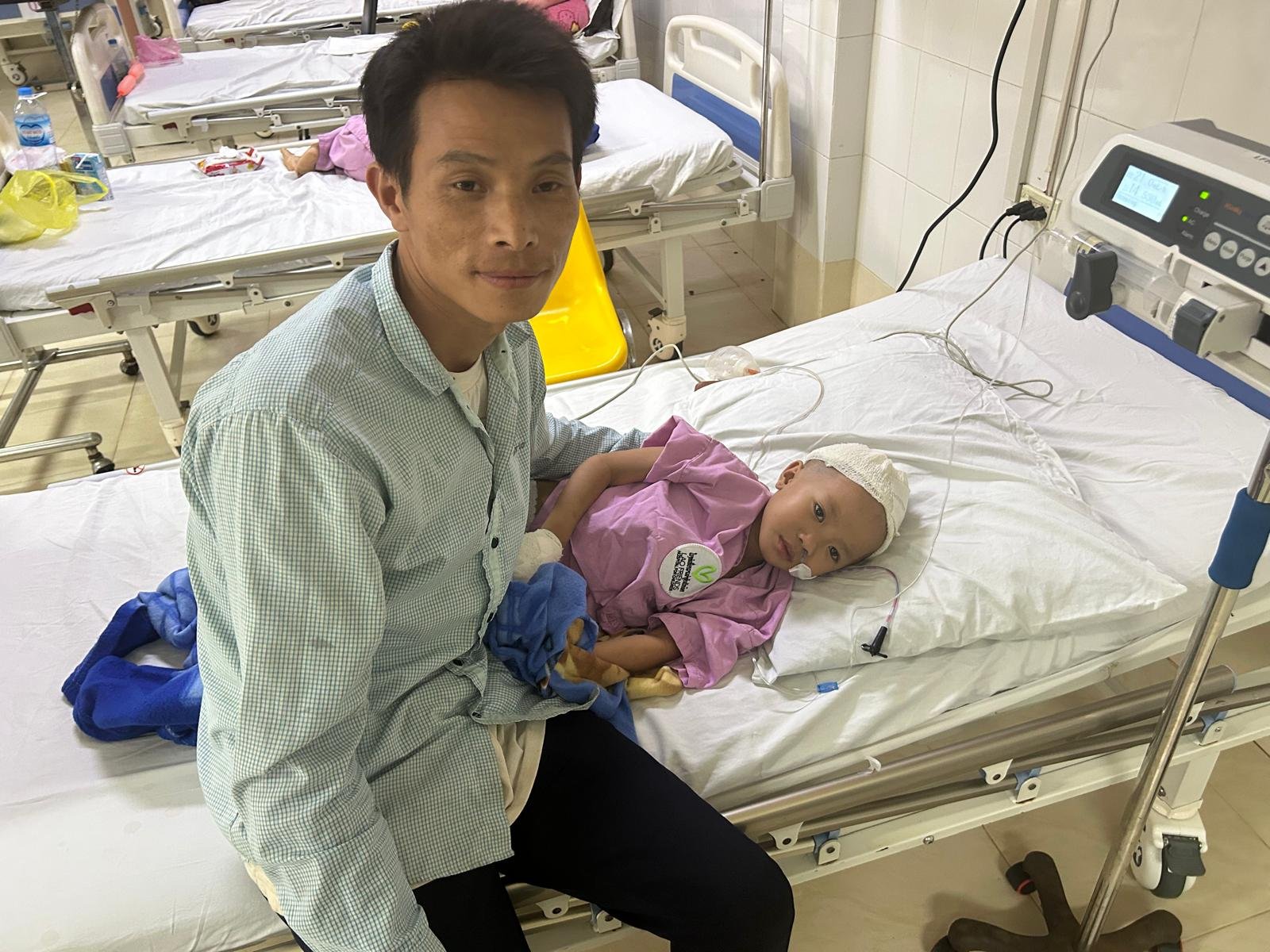Emergency Neurosurgery in LFHC's OT Saves a Young Life
5-year-old Mai Wang was playing with her friends on her parent's farm in Ngoi District when she first started to experience severe head pains. She ran home and told her father, who showered her and tried to soothe his daughter to sleep. Almost as soon as she closed her eyes, she began vomiting. She was unable to eat food and was continuously vomiting over the next few hours. Mai’s family decided to take her to Ngoi District Hospital.
Although Ngoi District is over four hours' drive from Luang Prabang, Lao Friends Hospital for Children has built strong ties with the hospital's healthcare team as part of its district training program. It is due to these links that after two days of treatment and no improvement, the Ngoi district hospital team referred Mai to LFHC.
On the 31st of July, Mai arrived at LFHC’s emergency room. Following examination by the clinical team, it was determined she was displaying all the signs of increased intracranial pressure (increased brain pressure). It was sent for a CT scan of her brain. The team identified blood in her brain, surrounded by severe brain swelling. The bleed was secondary to an (AVM) arteriovenous malformation (a tangle of blood vessels that creates irregular connections between arteries and veins).
This AVM was bleeding internally with increasing swelling, which led to a rapid decline in Mai’s cognitive abilities.
Mai was provided with medication to try to reduce the brain swelling by drawing the fluid out in an attempt to reduce the pressure in her brain. She was placed on a ventilator. Due to her worsening life-threatening condition, the team decided that surgery was the only way they could save Mai’s life. Normally, neurosurgery is not practiced in LFHC’s operating theatre, but this was a case of life and death, and the surgical team decided they would attempt to operate.
The surgeons removed a piece of skull the size of a tea saucer and were able to stop the bleeding. The clot that had formed was then removed.
The removed skull was left off to allow for her brain to expand and reduce the pressure even more. The scalp was closed, and a thick bandage with a drain was applied.
The surgery was a success.
Following intubation and close monitoring in the intensive care unit the team saw slight signs of improvement. After a few days she was extubated and transferred to the in-patient department where she is now smiling, sitting up and able to eat food. She will be closely monitored to ensure she continues to make positive progress and a plan will be made to address to skull removed during her surgery possibily rectified with a small metal plate.
Without the intensive care unit at Lao Friends Hospital for Children the highly skilled physicians , nurses and surgical staff Mai would have had no chance of survival. Mai is why we exist because every child deserves to be treated like our own. With excellence, dignity and compassion. This is who we are.

